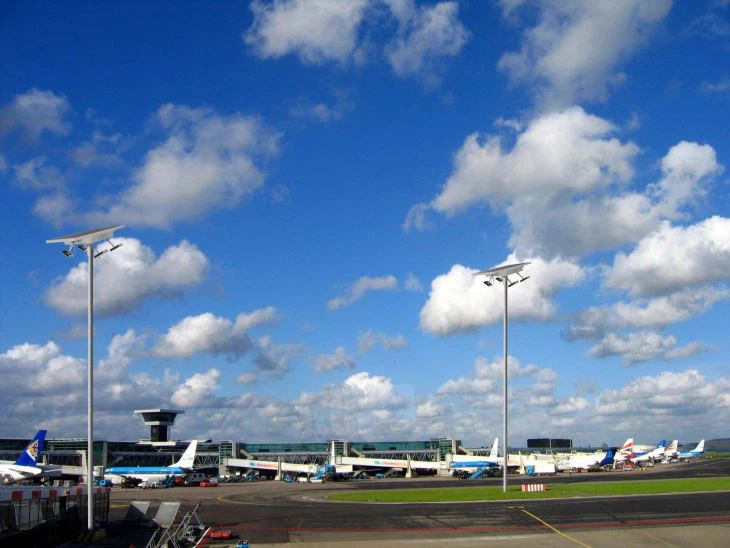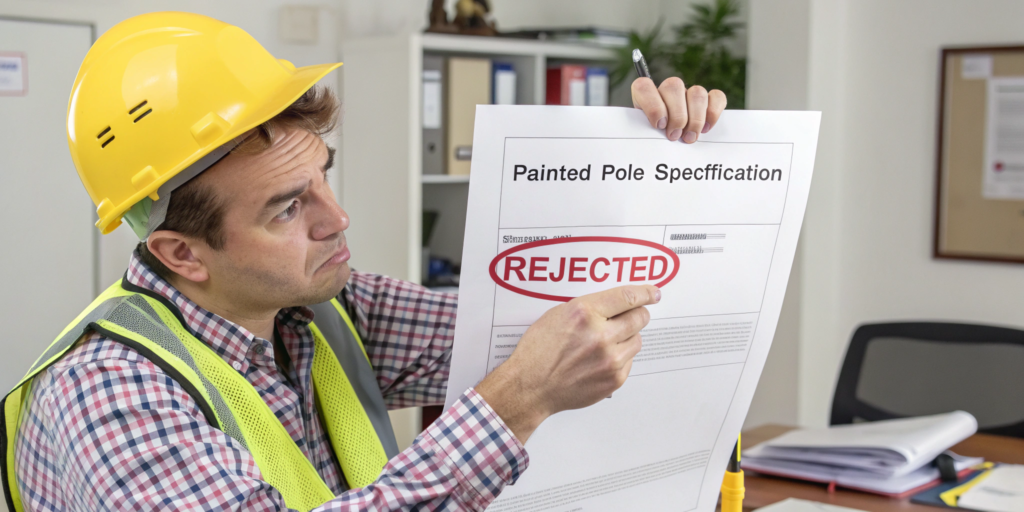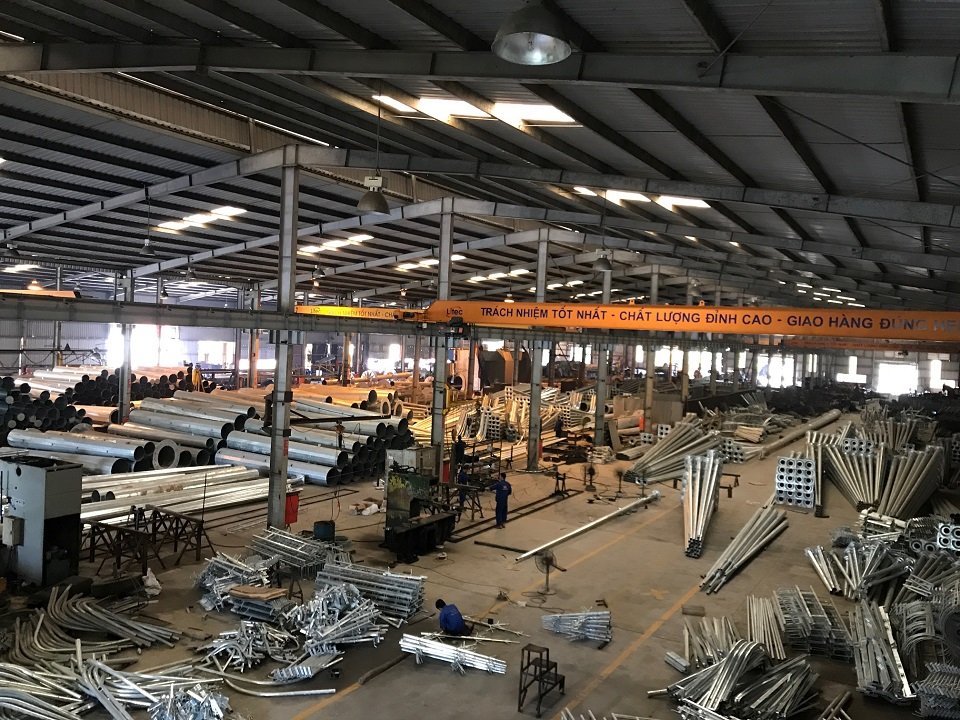We once replaced 42 rusted poles in northern Uganda—not because the lights failed, but because the poles couldn’t survive two rainy seasons.
The right solar street light pole isn’t just about size or steel—it’s about matching pole specs with local wind, ground, light design, and budget realities.
In this guide, I’ll walk you through how I select poles for real projects—from remote clinics in Gulu to coastal roads in Ghana—based on what’s failed before and what still stands today.
What to Consider When Selecting Solar Street Light Poles?
There’s no universal “best pole.” I learned that in 2018 when we used the same 6-meter spec for a hospital parking lot in a highland town and a rural gravel road project. One lasted fine. The other? Multiple tilts within 9 months.
Pole height, wind pressure, soil type, solar load, and bracket configuration all affect what works.
I typically start with a simple question: “What will this pole be asked to do?” Then we look at:
- Local climate (coastal wind? desert sun? high humidity?)
- Required pole height and weight load
- Fixture and panel layout
- Soil conditions and foundation depth
- Budget limitations (short term vs long-term thinking)
- Expected lifespan (5 years? 25?)
Let’s unpack these, one by one.
How Tall Should the Pole Be?

In 2020, we supplied a solar lighting system to a university in Togo. The contractor initially ordered 4-meter poles for a two-lane entrance road. After simulation, we realized vehicles would throw shadow gaps. We switched to 7-meter poles, with symmetrical lighting, and the night visibility was dramatically better.
Pole height affects more than light spread—it determines panel tilt angle, battery box reach, and wind profile.
Height Guidelines I Use (Based on Past Projects)
| Application | Typical Pole Height |
|---|---|
| Footpaths, garden walks | 3–4 m |
| School campuses, clinics | 5–6 m |
| Town roads, parking lots | 6–8 m |
| Dual-carriage roads, city streets | 9–12 m |
As a rule of thumb:
- For single-sided mounting → use road width ÷ 1.2
- For opposite-side symmetry → use ½ road width
These numbers aren’t from textbooks—they’re from dozens of layout adjustments we’ve made when lighting didn’t hit the ground where it was supposed to.
What’s the Best Material for the Pole?
I used to think hot-dip galvanized steel was the all-around solution—until I saw how it performed near saline water.
Today, we use aluminum for any site within 5 km of the coast, fiberglass in hurricane-prone areas, and steel inland—with proper coating and base design.
Material Comparison Table (From Field Results)
| Material | Best For | Field Notes |
|---|---|---|
| Hot-Dip Steel | Inland towns, rural districts | Works well with ≥ 80μm zinc layer; avoid if drainage is poor |
| Powder-Coated Aluminum | Coastal cities, modern campuses | Easier to install; no rusting after 5+ years in Cotonou |
| Fiberglass Composite | High-wind coastal roads | Survived 2023 tropical winds in Mozambique without any crack or tilt |
Pay attention to wall thickness. Many failures I’ve seen were caused not by the material itself, but by overly thin walls:
- 3 mm for <6 m
- 3.5–4 mm for 6–9 m
- 4+ mm for 10+ m in wind zones
If your supplier isn’t ready to give specs down to the mm—walk away.
Why Wind Load and Structural Resistance Matter So Much?

In 2022, a project outside Bujumbura failed inspection because the pole specs only covered 100 kph winds, but the region faced gusts over 135 kph during the wet season.
Poles don’t fall often—but when they do, it’s almost always wind + bad foundation + weak flange.
Here’s what I check now:
- Is the EPA (Effective Projected Area) of the panel + fixture calculated?
- Is the pole wind-rated for at least 120–150 kph (depending on region)?
- Are brackets wind-tested and not just off-the-shelf?
A tapered or octagonal pole helps reduce drag. Flat panel arms are wind traps unless they’re low-profile or streamlined.
How to Match Pole Type with Your Solar Light Configuration?
I still remember a 2019 project where a team installed an all-in-one unit on a 5 m aluminum pole—but didn’t account for the battery weight on one side. By week 3, the fixture began tilting sideways.
The weight and shape of your fixture matters. Poles aren’t just light holders—they’re load balancers.
| Solar Type | Mounting Needs |
|---|---|
| All-in-One | Top-load balance critical |
| Split-Type | Side-mount bracket must not exceed torque tolerance |
| Battery-on-pole | Use internal routing and double-check center of gravity |
For newer solar modules, we’ve started using integrated curved designs—less drag and easier to mount.
How Environment Shapes Pole Selection?

Desert heat peels paint. Salt air corrodes base bolts. Snow buildup freezes cabling. I’ve dealt with all three.
If you ignore your project’s natural environment, no amount of “high-strength” will save your pole from early failure.
What I Look For by Region
| Environment | Pole Consideration |
|---|---|
| Coastal (e.g., Mombasa, Cotonou) | Aluminum or fiberglass. Avoid cold-dip steel. |
| Semi-Arid (e.g., Sokoto, Turkana) | Use powder coating with UV additives. Black finishes age fast. |
| Mountain & Snow (e.g., Kabale) | Fiberglass + sealed panel casing. Deep-set anchors. |
| Humid Forest Zone | Double coating; check for mold inside the access door after 6 months. |
We now include silica gel packs in all pole access doors in rainforest regions. It’s a small step—but it reduced internal rust cases by 90%.
Foundation and Installation—Where the Project Often Fails
If I had to name the single biggest reason poles lean—it’s poor soil prep.
The best pole in the world will still fall if its base sits in loose gravel or shallow concrete.
- For anchor base installs, use M20+ bolts, embed ≥ 500 mm
- For direct burial, coat the buried section with bitumen or zinc wrap
- Use min. 1:2:4 concrete mix with crushed stone (not river sand)
- Don’t forget weep holes for drainage if water collects at the base
One of our projects in Sierra Leone added just 15 cm extra depth after rainfall erosion data came in—it made all the difference.
Budget: Balancing Cost and Lifespan
I get it—budgets are tight. But spending 20% less today often means spending 100% more within five years.
We’ve run ROI calculations on over 60 installations. Poles that last 20+ years save more in the long run, even if they cost $100 more at the start.
| Pole Type | Avg Cost (USD) | Life Expectancy | Avg Cost/Year |
|---|---|---|---|
| Local steel (painted) | $150 | 5–7 yrs | $25–30 |
| Galvanized steel | $200–280 | 20+ yrs | $10–14 |
| Aluminum | $300–400 | 25+ yrs | $8–12 |
| Fiberglass | $400–500 | 30 yrs | $13–16 |
Don’t just ask, “What’s cheapest?” Ask, “What will I not need to replace?”
Frequently Asked Questions
Can I reuse existing poles from old grid systems?
Only if they meet wind load and bracket strength specs—and have no internal rust.
How do I check wind load requirements?
Use local zoning data or tools like ASCE wind maps. Most pole vendors should supply wind-tunnel test reports.
Do aluminum poles rust?
No, but they can oxidize. A good powder coating (outdoor grade) eliminates that problem.
Conclusion
I’ve made mistakes. We all have. But I’ve also seen poles that still stand strong a decade later in tough environments.
If you match your pole not just to the light—but to the location, weather, soil, and people using it—you’ll get a solar system that doesn’t just work, but lasts.







